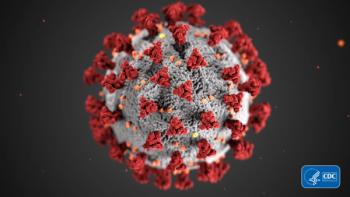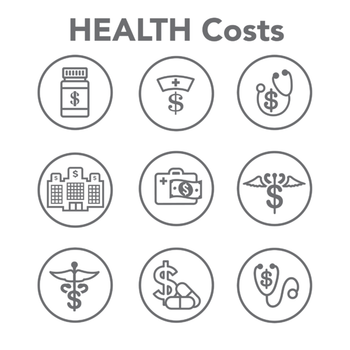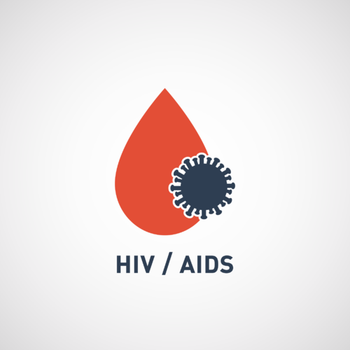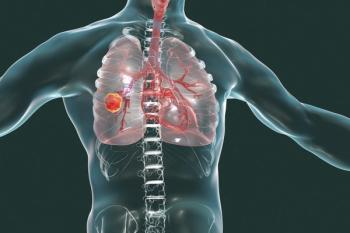
There is a great need for additional outreach to the transgender community, especially by addressing concerns that include fear and loss of confidentiality, distrust of the medical community, abandonment, and abuse.

There is a great need for additional outreach to the transgender community, especially by addressing concerns that include fear and loss of confidentiality, distrust of the medical community, abandonment, and abuse.

Cushing syndrome, a rare endocrine disorder caused by abnormally excessive amounts of the hormone cortisol, has a new pharmaceutical treatment to treat cortisol overproduction.

Repetitive transcranial magnetic stimulation of the brain has been shown to reduce the effects of treatment-resistant depression, but study results show that intermittent theta-burst stimulation may be more efficient and effective.

Parkinson disease (PD) subtypes derived from a novel subtyping system were significantly linked with disease duration and severity. However, the system may solely reflect stages of PD, rather than identify distinct clinical subtypes.

British Prime Minister Boris Johnson was moved to the intensive care unit (ICU) of a London hospital, 10 days after being diagnosed with coronavirus disease 2019 (COVID-19). Also Monday, the CDC released a preliminary report about how COVID-19 is affecting children in the United States.

In a study released Monday by the Integrated Benefits Institute, researchers found that due to lost time from work caused by the novel coronavirus disease 2019 (COVID-19), employee benefits for absent workers could cost employers more than $23 billion.

As the United States prepares for what could be the worst week yet of the coronavirus disease 2019 (COVID-19) pandemic, national attention has been focused on the disease’s current epicenters in New York and New Jersey. However, across the country, the pandemic is slowly seeping into the nation’s economically vulnerable populations and is already taking a toll on minority communities.

Kimberly Lovett Rockwell, MD, JD, and Alexis S. Gilroy, JD, the authors of a commentary in the April issue of The American Journal of Managed Care®, explain how telemedicine can help alleviate the burden on health systems brought by the coronavirus disease 2019 (COVID-19) pandemic and how regulations are shifting to enable use of the technology during the pandemic and beyond.

Coronavirus disease 2019 (COVID-19) was linked with cardiovascaluar issues and cardiac arrest; African Americans were shown to have higher rates of infection and death due to COVID-19; health experts call for smokers to cease use and manufacturers to halt production.

Welcome to Paper of the Week, which looks back at research and commentary of the past 25 years in The American Journal of Managed Care® and why it matters today.

The analysis looked at 13 of America’s largest employers, including energy, hospitality, retail, transportation, and finance companies.

The FDA has announced a relaxing of its restrictions on gay men being allowed to donate blood, in light of the coronavirus disease 2019 pandemic. Instead of 1 year, if a male has had sex with another male, he need only wait 3 months to donate blood.

What can be done to further delineate the risk factors associated with breast cancer to increase prevention efforts across the board? The key may lie in the white blood cells that circulate in the blood, particularly leukocytes and monocytes.

The introduction of biosimilars in the US market brings along specific challenges to health system pharmacists, including formulary assessment, implementation, and education of patients and various health system stakeholders, according to a review published in Drugs In Context.

This week, the top managed care news includes a CDC report says diabetes is the condition most linked with coronavirus disease 2019, CMS temporarily suspends rules to give hospitals more capacity during the COVID-19 pandemic, and a late-stage trial for dapagliflozin ends early after showing efficacy for chronic kidney disease.

Detectable viral load (VL) is associated with a significantly increased risk of cardiovascular disease (CVD) among US youth living with HIV, according to an abstract presented at the Conference on Retroviruses and Opportunistic Infections.

Coverage of our peer-reviewed research and news reporting in the healthcare and mainstream press.

Drugs used by hospitals to intubate and treat patients with COVID-19 are in short supply; rapid tests will be sent to Native American, rural populations; data shows a rise in nonfatal drug overdoses between 2016 and 2017.

Mantle cell lymphoma is a type of B-cell non-Hodgkin lymphoma with a typically poor prognosis. Even with an allogeneic stem cell transplant, patients can become resistant to chemotherapy. Most do not survive 4 or 5 years after diagnosis, and the 10-year survival rate hovers between 5% and 10%.

A large-scale study reports that patients with chronic obstructive pulmonary disease (COPD)—even if they never smoked—have a 2.6 times greater incidence of developing lung cancer compared with those who had neither COPD or a history of smoking.

In a recently published review, researchers examined the brain-skin connection and the pathogenesis of psoriasis, focusing on the serotonergic system.

Theranexus announced this week that its phase 2 trial for THN102 (modafinil/flecainide) in patients with Parkinson disease met its primary efficacy end point of significantly increasing the proportion of patients no longer suffering from excessive daytime sleepiness.

Vitamin D deficiency in women with gestational diabetes mellitus (GDM) is associated with an elevated risk of postpartum glucose intolerance, according to a study published in Endocrinology and Metabolism.

In a survey released this week, half of US small business owners said they cannot afford to pay employees for a full month amid the economic lockdown caused by coronavirus disease 2019, with 1 in 5 also noting their inability to afford wages for a week or less.

A record number of Americans filed for unemployment last week; President Trump decides not to reopen Affordable Care Act enrollment; a survey found a majority of physicians say they cannot test for COVID-19 fast enough.

The FDA has requested all ranitidine (Zantac) products be pulled from the market immediately. The recall includes all prescription and over-the-counter ranitidine drugs as ongoing investigations uncovered levels of N-Nitrosodimethylamine (NDMA), a probable human carcinogen, increase over time.

Researchers analyzed data from 38 patients with COVID-19 from Hubei Province, China, and found 12 individuals had ocular manifestations, including epiphora, conjunctival congestion, or chemosis.

The 2 main criteria that warrant genetic testing for breast cancer in women are age and having a family history of cancer. Postmenopausal women without any hereditary risk factors, however, often do not undergo genetic testing for the disease.

Cognitive-behavioral therapy via telephone was shown to be an effective depression intervention in patients with Parkinson disease, which may lead to greater access of care for patients with this unmet need, according to study findings published today.

The coronavirus disease 2019 (COVID-19) pandemic has led to healthcare cost increases of as much as 7% for employers, based on recent study results, stressing the essential need for organizations to have a plan that supports employees and potential revenue loss.

259 Prospect Plains Rd, Bldg H
Cranbury, NJ 08512
© 2025 MJH Life Sciences®
All rights reserved.
